1317 Survival of the kindest
Happy is the New Healthy
by Joan Neehall
Toronto: Simon & Schuster Canada (Forefront Books), 2021
$36.00 / 9781948677707
Reviewed by Lee Reid
*
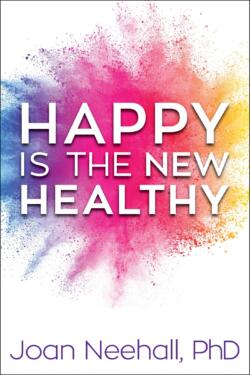 “Keep your heart open in hell,” is a piercing term from the 1980s that has stayed with me for the past forty years. Nowadays, hell seems poignantly applicable to the losses and limitations exposed by social justice inequities, or to ongoing global crises and human polarization highlighted by climate change and COVID-19. In the eighties, grief therapist Stephen Levine coined the term in his work with death and dying. He taught people the skills to be present with pain, to drop judgement or avoidance, and to trust that there can be grace in dying and vulnerability. Readers might well wonder if, or what, is the compatibility between spiritual themes and skills such as Levine’s, or my more recent Ormsby review of author Janie Brown’s soulful work with cancer (Radical Acts of Love), or Joan Neehall’s book where the inside cover asks, “… are you looking for happiness?”
“Keep your heart open in hell,” is a piercing term from the 1980s that has stayed with me for the past forty years. Nowadays, hell seems poignantly applicable to the losses and limitations exposed by social justice inequities, or to ongoing global crises and human polarization highlighted by climate change and COVID-19. In the eighties, grief therapist Stephen Levine coined the term in his work with death and dying. He taught people the skills to be present with pain, to drop judgement or avoidance, and to trust that there can be grace in dying and vulnerability. Readers might well wonder if, or what, is the compatibility between spiritual themes and skills such as Levine’s, or my more recent Ormsby review of author Janie Brown’s soulful work with cancer (Radical Acts of Love), or Joan Neehall’s book where the inside cover asks, “… are you looking for happiness?”

Although at first I groaned at the positive title, Happy is the New Healthy, I really enjoyed reading Neehall’s informative book. Her insights and vivid stories of the pain and joys of clients struck me as authentic and experienced, and not based on a fake positivity that bypasses pain. Joan Neehall is a PhD clinical psychologist who has practiced extensively for over thirty-five years in BC and Alberta. In her book (co-authored with Laura Morton), it is not evident if she works with people or cultures who are marginalised or impoverished, or who have been the targets of racism and cultural prejudice, but she certainly shares her wealth of experience with treating addictions and the gamut of human suffering.
Although readers may well query if anyone can find elements of happy change in the pandemic, the book says “yes” and presents exactly that possibility. Informative and educational, the book is pragmatic and worth reading. Neehall’s stories, which are touching, funny and tragic, are packed with teachable skills. I do wonder if the book would be as relevant for people who do not have some degree of cultural privilege, be it racial or economic?
What is happiness? What does it mean to feel “guarded optimism” or “tragic positivity”? You can see that, in using such paradoxical terms, Neehall intends to help people uncover and discover concrete cures within afflictions, no matter how mysterious or enormous the problems and behaviours may appear. Her approach is anything but ambiguous. The book teaches people the life skills to keep their hearts open in hell.
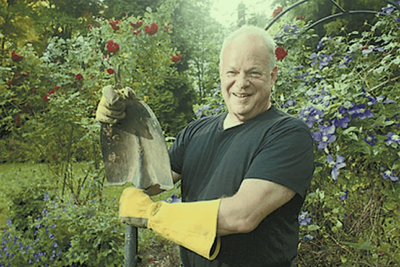
Addressing happiness, Neehall quotes psychologist Martin Seligman: “Authentic happiness comes from identifying and cultivating your most fundamental strengths and using them every day in work, love, play, and parenting.” She explains that happiness is not an act — it’s a habit. (p. 213). The insights and action plans in the book are designed to substitute misery-producing habits with happy habits, and they are effective. Neehall’s book provides readers with front-line skills to reduce addictions and destructive patterns that can undermine personal esteem, health, and interpersonal or even international relationships.
In these past twenty months of the pandemic and exacerbated climate change, suffering has become a shared and far more visible global condition. These times demand that we reach beyond familiar comforts to learn the practical skills and existential/spiritual skills to survive or thrive. “Never,” (to paraphrase Neehall), “has the world been so lonely and in conflict as these times of pandemic and climate change” (see Chapter Three, “Loneliness”). If anything, the pandemic has magnified the collective traumas and embedded cultural prejudices, such as colonialism, racism, and sexism that sabotage equity. This too provides an opportunity to renew motivation for health and resilience in the face of crisis. Books like Happy is the New Healthy clarify and help us to positively change the complex situations and issues that stress so many people around the world. “The negative implications of loneliness are felt regardless of the culture in which it occurs,” she notes (p. 62).
Neehall elaborates, by stating that our happiness “habit” will grow as we cultivate love, laughter, connection, gratitude, volunteerism, mindfulness, health choices, and the re-creation of a village culture made up of close connections. In fact, she suggests (p. 227) that practising these activities can be the vaccine to immunise us against despair: “Research tells us that only 10 percent of Happiness comes from life-events. DNA can claim only 50 percent responsibility …. 40 percent of our happiness comes from how we process situations and events” (p. 213).
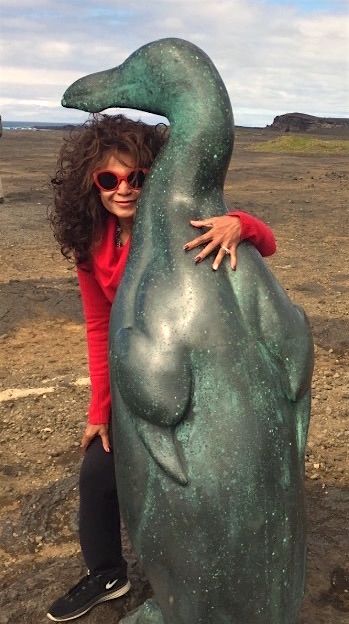
She lists the five happiest countries in the world, revealing the two characteristics they have in common: 1) trust in public institutions and 2) abundant social connections. Guess who the countries are? Finland, Denmark, Switzerland, Iceland, and Norway. Not overlooking the spiritual, Neehall underlines the how-to skills to cultivate awe — the ability to become completely present to what is around us. It is no wonder that some doctors now prescribe nature as an antidote to depression, loneliness, and anxiety. One might note that the “happy countries” are predominantly northern white and economically privileged, compared to many cultures that are debilitated by colonization or climate changes. I do wonder if there are differing ideals for happiness in countries and peoples who struggle with political and economic oppression?
In Happy is the New Healthy, readers will learn how to develop various ego states that can protect against anxiety, depression, and addiction. The book is a counselling primer that adroitly synthesizes wisdom from diverse clinical tracks and associated experts into easy-to-understand self motivation practices. If you want to grow more energy, enthusiasm, and guarded to unbridled optimism, this book will help.
I enjoyed Neehall’s list of the character types (now called “motivational pathways”) and how to harness your “type” to a change you wish to make. Examples are the service pathway, the outdoorsy pathway, the cerebral path, the introspective path, the kinship path, and the propelling or productive pathway for people who are very active and/or creative. Most of us have some predominant traits from the varying pathways, and Neehall’s list will help readers to assess which characteristics will best empower them towards their goals. Always, she notes, “Personal change requires know-how (learning) as well as desire (motivation)” (p. 205).
Neehall employs an engaging and well-researched storytelling style that explores common destructive behaviours while taking clients through baby steps to change them. To clarify her solution-focused approach, she presents many checklists and questionnaires with which readers can reflect upon their lives and feelings. According to her research, our primitive survival brains are biased toward negativity and fear (or aggression), thus anticipating and protecting us from danger. But, she reassures us, our DNA (genetic code) is programmed to be the opposite: happy! This does not mean that we can successfully avoid human suffering, or frantically pursue self-improvement programs or superficial contacts on social media. Neehall suggests that happy people learn to bounce out of depressions and anxiety faster, usually by focusing on what activities and thoughts they can change and how to be creative about it. They learn how to reverse negative thinking and habits, and to substitute more positive habits and connections.
Happy is the new Healthy presents readers with tips on how to cut down on procrastination, or to end energy-draining incompletions in life. Neehall terms this aptitude “positive addictions.” Although she means that we can cultivate better habits, I find this term misleading, as it implies a compulsive aspect to positive self care habits. However, I do appreciate Neehall’s optimistic take on complaining: “Complaining to a like-minded individual, as long as you come up with solutions together, can increase the bond between you — and it’s so cathartic!” (p. 233).
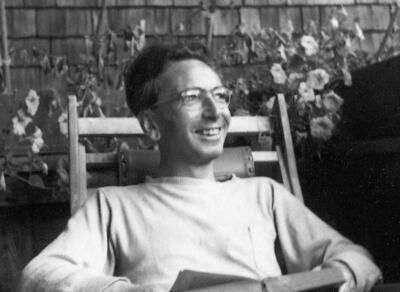
In a chapter dedicated to the pandemic, Neehall explores “tragic optimism” as an antidote to collective trauma. The term, which originated with Holocaust survivor and author Viktor Frankl, defines tragic optimism as “…our ability to find meaning in spite of a difficult, untenable situation.” (p. 236). Neehall’s hopeful list of silver linings that underscore the pandemic is an example of modern tragic optimism. In the next few paragraphs of this review, I will provide some examples.
Neehall suggests that we practise four rules or reminders that she has posted on her fridge to maintain her own balance and integrity. Stemming from the work of marital (or couples) therapist John Gottman, they are: “1) Thou shalt not criticise 2) Thou shalt not stonewall (i.e. shut people out or down, and refuse to respond to others) 3) Thou shalt not be defensive 4) Thou shalt not display contempt.” As a measure of “survival happiness” (which is my term, not hers), she suggests that we use the pandemic years to do some deep personal reassessment and reflection. Might the pandemic offer us the opportunity to improve self-knowledge, houseclean old patterns and ineffective communication, and end or confront relationships that no longer work? Happy is the new Healthy does not address much larger social issues such as poverty or political oppression, but that does not imply that it excludes the experiences of victims of traumatic social conditions.

With the pandemic-induced slowdown of economic and fossil fuel consumption, Neehall suggests that, while we wait for some return to “normal,” we do a searching moral inventory. By this, she means that we review our national and global carbon footprint on the environment to determine how green it is, and invest in collective acts of kindness, accountability, compassion, and generosity. She also provides helpful suggestions on how to sustain love during lockdown.
According to Neehall, the pandemic presents an opportunity for readers to consider writing out our legacy — the meaning and purpose we hope to leave behind, and how this will benefit others. “What remains after I die has everything to do with how I live today … meaning and purpose are at the core of happiness — and remarkably at the core of grief as well!” (p. 238). She hints at a post-traumatic global identity that will value the health and wellbeing of everyone and will steward interdependence and collaboration. While this may sound facile and easy, it is actually very hard work. That it takes hard work to “earn happy” might be a novel concept for some readers, and a relief for others who may wonder why happiness is so elusive, or unsure what they are doing wrong.
Happy is the new Healthy offers readers many rewarding, if not obvious and challenging, tasks that unfold in easy-to-follow sections. In a section on self-care, Neehall explores time-honoured skills for listening to and understanding your body: “Your body wants to be your friend, not your enemy” (p. 124). Deep breathing is one that almost anyone would recognise.
One of the addictive pathways and “happiness killers” that she confronts is perfectionism, including her personal version of this. “This preoccupation keeps us believing in the idea that being flawless is more important than being authentic and our true selves” (p. 160). Ironically, Neehall encourages self-improvement while confronting extremely addictive aspects of the same issue. The ideal of being perfect is hard to resist, but the reality is that most of us end up dissatisfied, chasing after impossible ideals and driven to be better or other than our true selves.
I was intrigued by Neehall’s portrayal of one familiar perfectionist trait, which is “people-pleasing.” To paraphrase, people who always want to please others are inevitably treated with disrespect, maintains Neehall, “because others react with irritation to people who try too hard” (p. 164). Equally irritating is an exaggerated worry about being alone, which can cause people to hang on to unrewarding relationships. Neehall points out that chronic worry about being alone perpetuates the negative experience of aloneness, which can balloon into an obsessive fear of being alone.
Most of us, Neehall writes, may be aware of our negative behaviours but unaware of the thoughts or beliefs that reinforce them:
While it seems easy to pick up and maintain harmful addictions, it may not seem as simple to establish positive addictions…. But don’t be afraid of the formidable challenge; I suggest instead that you welcome it, because the benefits of greater inner peace, self-confidence and well-being are at stake (p. 173).
She suggests that we can frame our positive addictions (or new less harmful habits) as something we get or choose to do, not as something we have to do or feel compelled to do. The “have-to’s” can undermine motivation and cause guilt. According to Neehall, our brains have a five-second window to take action toward change before reverting to fear and paralysis. She presents checklists to reveal our motivational reasons for change, and goals we can set from renewed awareness of our personal values (p. 194).
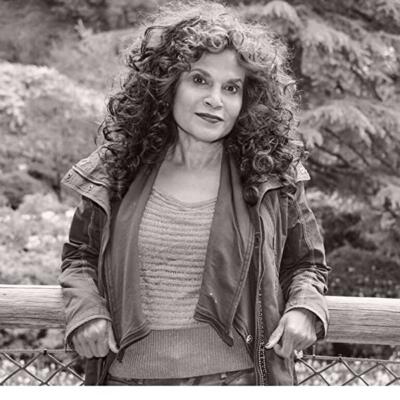
Sleep, says Neehall, is critical to happiness. “Various studies estimate that up to 90% of adult and child patients with significant depression experience some type of sleep problems” (p. 127). Lack of sleep can cause relapse into negative addictions. Her book scientifically elaborates on the deleterious effects of poor sleep, which in turn disrupt our neurotransmitters (brain chemicals).
One section in the book explores negative addictions and common destructive thinking (“cognitive distortions”). This section addresses our willingness and ability to change these established patterns. The book is rich with provocative self-help questions and questionnaires that will build insight into destructive mindsets and present readers with the clarity about how to change them. Some sample questions are: “When confronted with difficulties, can I usually face things on my own?” And “If I don’t like something, do I quickly move on to something else?” Readers will also benefit from the many tips and stories designed to strengthen and maintain motivation. For example, if you lapse or relapse in applying a positive habit, “Focus on the gain, not the loss, but never skip two days in a row. (Even when circumstances make it necessary to make an adjustment, carry out your commitment)” (p. 193).
“Addiction is not a substance disorder, it’s a social disorder,” clarifies Neehal (p. 133). I appreciate this definition because it supports premises in current trauma and attachment therapies that define trauma as “broken connections.” The issue with the pandemic, and also with conditions such as depression, anxiety, or loneliness, then becomes one of repairing broken human connections. Compare this approach to competition and perfectionism, or to objectifying and judging people with differing values and cultures. Neehall teaches us how to form better social habits despite our conflicting needs: “As we continually negotiate between our needs for togetherness and for freedom, our needs for love and desire, and our needs for security and adventure, we pick people who match our vulnerabilities and bring them into our lives” (p. 134). She affirms that we can harness our social anxiety and stress, and get them to work for us in building meaningful connections. Given the opposite, such as the grim rise in destructive thoughts reported by people facing depression or anxiety, or increased loneliness or depression if we avoid talking with others, readers will realise that prolonged loneliness and self isolation make it more difficult to establish empathic connections. In reading the book, we see that this predicament is preventable.
About the potential for the digital world to isolate people under the guise of building intimacy, Neehall suggests that, “The most important thing is that we establish a sense of belonging with others who share similar beliefs or interests” (p. 139). Finding a “third place” outside the home or workplace (such as a park or a cafe) that supports people to connect with others is the best antidote to loneliness. Dog owners would probably agree, because walking dogs and the ensuing conversations with other walkers is a popular social icebreaker.
I particularly liked Neehall’s thoughtful exploration of the pro-and-con effects of social media followed by in-depth questions about how we respond to others. Neehall’s examples of clients’ enthusiastic or empathic communication (and listening), compared to the negating effects of unresponsive or destructive communication, reveal the causes of their loneliness and alienation. She quotes three responses or tips from Oprah with which to gauge our interpersonal exchanges: “1) Did you hear me? 2) Did you see me? 3) Did what I say mean anything to you?” Although it is hard work to truly listen, understand, and provide positive feedback to others, readers can learn how to wholeheartedly respond to others, which in turn can strengthen relationships.
Joan Neehall’s Happy is the New Healthy aptly fits a term she has coined: “survival of the kindest.” What she implies is a different and expansive worldview that respects the diversity and complexity of being human in our times. What she gives us here are the steps necessary for change.
*
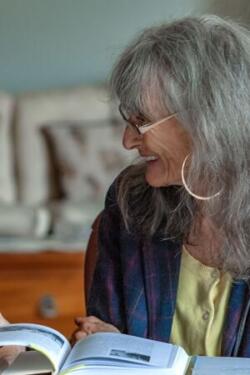
Lee Reid is a retired clinician from Nelson Mental Health. She is also author of three books about the resilience of BC rural and coastal communities. Recently, she has written and self-published a fourth book about the multicultural workers and residents who populated an historic extended care hospital in Nelson: Stories of Mount Saint Francis Hospital:1950-2005, which illustrates a legacy of compassionate nursing care. She has also written articles and reviews featuring intergenerational education, rural home support care services, and the health challenges faced by rural BC seniors. Her previous books are From a Coastal Kitchen (Hancock House, 1980); Growing Home: The Legacy of Kootenay Elders (Nelson, 2016), reviewed here by Duff Sutherland, and Growing Together: Conversations with Seniors and Youth (Nelson, 2018), reviewed here by Luanne Armstrong. Editor’s note: Lee Reid has also reviewed books by Janie Brown, June Hutton & Tony Wanless, Megan J. Davies & Rachel Barken, Ellen Burt, and Luanne Armstrong for The Ormsby Review. In 2018 she contributed a popular memoir of growing up in North Saanich, The Spider Hunters. Visit her website here.
*
The Ormsby Review. More Books. More Reviews. More Often.
Publisher and Editor: Richard Mackie
The Ormsby Review is a journal service for in-depth coverage of BC books and authors in all fields and genres. The Advisory Board consists of Jean Barman, Wade Davis, Robin Fisher, Cole Harris, Hugh Johnston, Kathy Mezei, Patricia Roy, Maria Tippett, and Graeme Wynn. Scholarly Patron: SFU Graduate Liberal Studies. Honorary Patron: Yosef Wosk. Provincial Government Patron since September 2018: Creative BC
“Only connect.” – E.M. Forster
4 comments on “1317 Survival of the kindest”
Joan Neehall and Lee Reid: Every now and again some vital food arrives on exactly the day one feels in need. Thank you for some really thoughtful considerations here.